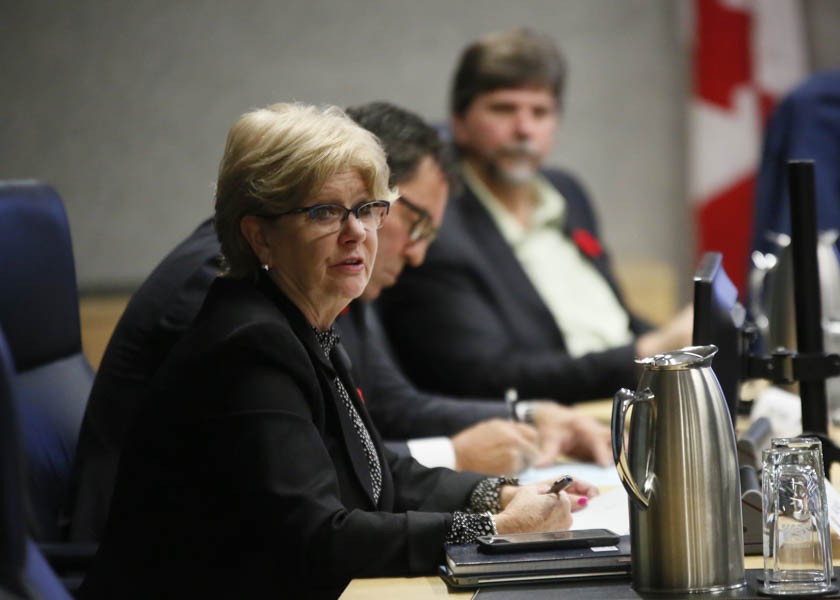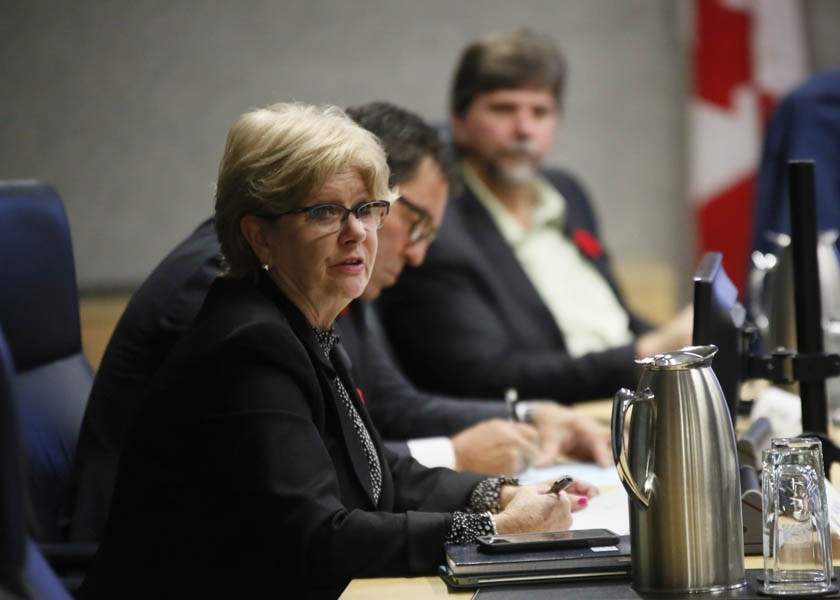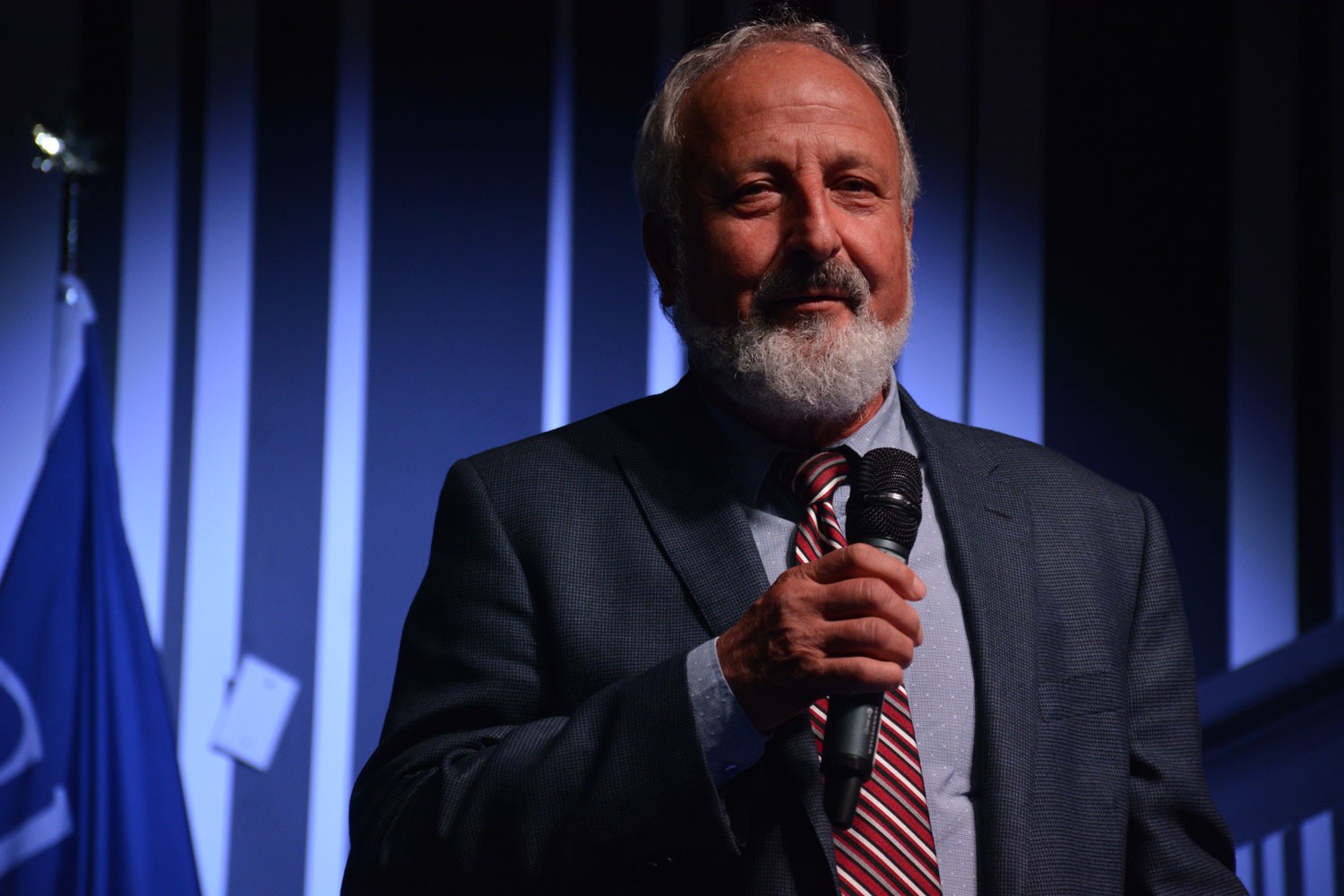
Update: Taxpayers on the hook for Linda Jeffrey's and departing councillors' rich retirement package
Saying goodbye to four departing members of city council, plus the mayor, could result in total payouts of over $2 million from the City of Brampton, the Region of Peel, and their pension programs. That is twice what seven departing members were entitled to receive after the 2014 election, in the same year council opted to enter the OMERS pension scheme.
The calculations include severance payments, accrued pension contributions and benefits from both the city and region. The Pointer recently reported that each of the four retiring members have been eligible to receive their share of severances amounting to roughly $730,000 in total for all four of them, over and above pensions (to which they contributed half).
Brampton residents told The Pointer the rich taxpayer funded payouts for retiring and defeated council members are hard to swallow at a time when such pensions and benefit packages are becoming more and more rare in the private sector, as many workers struggle to make ends meet.
“2.2 [million] seems a bit much. It's not like they are breaking rocks or anything. That does seem like a waste of funds,” said Jackson Coffey, an employee at a marijuana accessories shop in downtown Brampton.
Coffey wonders if that money could have been put to better use. “It’s tough to see. Especially if you look around and see stuff that needs fixing in the city. Stuff like transit, roads, infrastructure, just better parks, better… a lot things to make the city better rather than the life of one person,” he said.
In pensions alone, the total amount the mayor and councillors could receive in the long run totals between $1,340,113 and $1,687,693.80. Adding severances could bring that number up to more than $2 million.
The amount is especially eyebrow-raising compared to the payouts following the 2010-2014 term, when seven members of council left (only five are leaving now), and the total just barely crested $1 million.
Longevity explains part of the disparity. The most expensive payout, at the city level, will go to retiring councillor Gael Miles, who spent 30 years on council. She banked $253,494 in pension contributions through the Ontario Municipal Employees Retirement System, a defined pension fund that administers retirement plans for city workers. (The municipality pays half of the contribution; the other half comes out of the councillor’s paycheque.) John Sprovieri opted not to join the OMERS plan. He remained in the RRSP program, which also benefits from taxpayer-funded contributions for elected officials.

Retiring Councillor Gael Miles
OMERS’ primary plan was adopted in 2014 as the official pension scheme for the City of Brampton and its workers, with pension contributions prior to that transferred to the OMERS plan. The amount received is based on the employees’ best five years of contributions, with an adjustment in pension payments downwards after the recipient reaches 65 and can begin collecting Canada Pension Plan benefits.
Grant Gibson, of Wards 1 and 5, will be receiving slightly less than Miles. His contributions work out to $228,144.60 after 27 years. Elaine Moore, who is 63, has banked about $152,906.40 toward the OMERS program over 18 years, but the vast majority of that amount, prior to council joining the OMERS scheme, included a much smaller share contributed by taxpayers, compared to the 50 percent of contributions by the city in the OMERS plan.

Retiring Councillor Elaine Moore
Linda Jeffrey’s time as mayor was significantly less than that of the councillors, only four years compared to decades, so her contributions were much smaller. Her pension contributions work out to a value of $44,287.20.
Workers with Peel Region are enrolled in OMERS’ primary plan as well. Miles, who will turn 64 soon, leads the pack with pension contributions to the Peel plan of $151,243.20, while Moore has $84,024 collected over 15 years of service on the regional board. Sprovieri and Gibson have comparable figures, with Gibson accumulating $67,219.20. Sprovieri, who is 73 years old, could be set to receive $52,701.60.

Retiring Councillor John Sprovieri
According to calculations, Miles will receive about $7,000 a month in pension payments, once she starts drawing them, from her combined city and regional plans.
The outgoing mayor’s short time on regional council resulted in $22,407.20 in pension contributions. Jeffrey also received a hefty retirementy package from the province when she stepped down as a Liberal MPP and cabinet minister in 2014 to run for mayor.
In total, when adding the $730,000 in severances for the four retiring councillors, which they voted for themselves, under the leadership of Susan Fennell, despite a staff commissioned report that found the average paid out by other municipalities was less than a third of what Brampton council gave itself, could come out to more than $2 million in retirement-related costs to taxpayers. The staff report, during Fennell's time as mayor, also pointed out that many municipalities pay no severance if a councillor retires or chooses not to run for another reason. Brampton councillors who were retiring at the time and those now retiring, chose to give themselves the 18-month taxpayer-funded severance, on top of their generous pension packages. Moore will only get 14 months of severance, as she had only served for 14 years at the cut-off point.
“We're struggling right now to find money to build this university that we were promised, but we're going to make a promise to people to give $2 million? It makes no sense,” said the owner of a downtown pizza shop who did not wish to be named. “It sounds like something from when Fennell was mayor.”
The outsized figure was in fact made possible by a 2013 vote by the Fennell-led council to increase the cap on severance payments. Before the vote, city council members were entitled to one month’s salary per year of work, with a cap of 12 months. Council increased that to 18 months. The alteration was made especially awkward by the fact that “severance” is typically intended as a bridging amount given to terminated workers, not retirees, and that a consultant’s report showed municipalities paid out, on average, only 5.5 months, or paid no severance at all if members were retiring.
At the time, Fennell was plagued by a spending scandal that ultimately saw her lose to Linda Jeffrey in a landslide. At one point, she also held the dubious honor of being Canada’s highest paid mayor. Anthony Bakker, a shipper and receiver from Brampton, said he doesn’t like the idea of city officials receiving such amounts on the taxpayer’s dime.
“If you [voluntarily] quit a job, you do not get severance. So any politician that decides to not seek re-election is effectively 'quitting'. No severance. If you are voted out of office, that constitutes termination for cause and, again, no severance,” said Bakker.
Sylvia Roberts, a Bramptonian college student in her mid-‘20s, agrees with Bakker, and believes that “the payout looks especially unreasonable when the councillors in question receiving the benefit are retiring of their own volition.”
Submit a correction about this story


